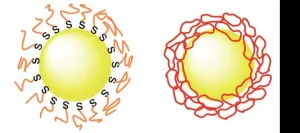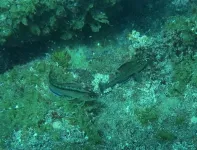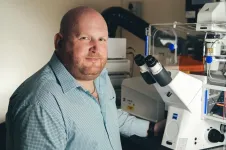New eco-friendly way to make ammonia could be boon for agriculture, hydrogen economy
2021-01-21
(Press-News.org) Chemical engineers at UNSW Sydney have found a way to make 'green' ammonia from air, water and renewable electricity that does not require the high temperatures, high pressure and huge infrastructure currently needed to produce this essential compound.
And the new production method - demonstrated in a laboratory-based proof of concept - also has the potential to play a role in the global transition towards a hydrogen economy, where ammonia is increasingly seen as a solution to the problem of storing and transporting hydrogen energy.
In a paper published today in Energy and Environmental Science, the authors from UNSW and University of Sydney say that ammonia synthesis was one of the critical achievements of the 20th century. When used in fertilisers that quadrupled the output of food crops, it enabled agriculture to sustain an ever-expanding global population.
But since the beginning of the 1900s when it was first manufactured on a large scale, production of ammonia has been energy intensive - requiring temperatures higher than 400oC and pressures greater than 200atm - and all powered by fossil fuels.
Dr Emma Lovell, a co-author on the paper from UNSW's School of Chemical Engineering, says the traditional way to make ammonia - known as the Haber-Bosch process - is only cost-effective when produced on a massive scale due to the huge amounts of energy and expensive materials required.
"The current way we make ammonia via the Haber-Bosch method produces more CO2 than any other chemical-making reaction," she says.
"In fact, making ammonia consumes about 2 per cent of the world's energy and makes 1 per cent of its CO2 - which is a huge amount if you think of all the industrial processes that occur around the globe."
Dr Lovell says in addition to the big carbon footprint left by the Haber-Bosch process, having to produce millions of tonnes of ammonia in centralised locations means even more energy is required to transport it around the world, not to mention the hazards that go with storing large amounts in the one place.
She and her colleagues therefore looked at how to produce it cheaply, on a smaller scale and using renewable energy.
"The way that we did it does not rely on fossil fuel resources, nor emit CO2," Dr Lovell says.
"And once it becomes available commercially, the technology could be used to produce ammonia directly on site and on demand - farmers could even do this on location using our technology to make fertiliser - which means we negate the need for storage and transport. And we saw tragically in Beirut recently how potentially dangerous storing ammonium nitrate can be.
"So if we can make it locally to use locally, and make it as we need it, then there's a huge benefit to society as well as the health of the planet."
OUT OF THIN AIR
ARC DECRA Fellow and co-author Dr Ali (Rouhollah) Jalili says trying to convert atmospheric nitrogen (N2) directly to ammonia using electricity "has posed a significant challenge to researchers for the last decade, due to the inherent stability of N2 that makes it difficult to dissolve and dissociate".
Dr Jalili and his colleagues devised proof-of-concept lab experiments that used plasma (a form of lightning made in a tube) to convert air into an intermediary known among chemists as NOx - either NO2- (nitrite) or NO3- (nitrate). The nitrogen in these compounds is much more reactive than N2 in the air.
"Working with our University of Sydney colleagues, we designed a range of scalable plasma reactors that could generate the NOx intermediary at a significant rate and high energy efficiency," he says.
"Once we generated that intermediary in water, designing a selective catalyst and scaling the system became significantly easier. The breakthrough of our technology was in the design of the high-performance plasma reactors coupled with electrochemistry."
Professor Patrick Cullen, who led the University of Sydney team, adds: "Atmospheric plasma is increasingly finding application in green chemistry. By inducing the plasma discharges inside water bubbles, we have developed a means of overcoming the challenges of energy efficiency and process scaling, moving the technology closer to industrial adoption."
STORAGE SOLUTION
Scientia Professor Rose Amal, who is co-director of ARC Training Centre for Global Hydrogen Economy, says in addition to the advantages of being able to scale down the technology, the team's 'green' method of ammonia production could solve the problem of storage and transport of hydrogen energy.
"Hydrogen is very light, so you need a lot of space to store it, otherwise you have to compress or liquify it," says Professor Amal.
"But liquid ammonia actually stores more hydrogen than liquid hydrogen itself. And so there has been increasing interest in the use of ammonia as a potential energy vector for a carbon-free economy."
Professor Amal says ammonia could potentially be made in large quantities using the new green method ready for export.
"We can use electrons from solar farms to make ammonia and then export our sunshine as ammonia rather than hydrogen.
"And when it gets to countries like Japan and Germany, they can either split the ammonia and convert it back into hydrogen and nitrogen, or they can use it as a fuel."
The team will next turn its attention to commercialising this breakthrough, and is seeking to form a spin-out company to take its technology from laboratory-scale into the field.
INFORMATION:
ELSE PRESS RELEASES FROM THIS DATE:
2021-01-21
It takes a lot to make a wooden table. Grow a tree, cut it down, transport it, mill it ... you get the point. It's a decades-long process. Luis Fernando Velásquez-García suggests a simpler solution: "If you want a table, then you should just grow a table."
Researchers in Velásquez-García's group have proposed a way to grow certain plant tissues, such as wood and fiber, in a lab. Still in its early stages, the idea is akin in some ways to cultured meat -- an opportunity to streamline the production of biomaterials. The team demonstrated the concept by growing structures made of wood-like cells from an initial sample of cells extracted from zinnia leaves.
While that's still ...
2021-01-21
Hokkaido University scientists have found a way to prevent gold nanoparticles from clumping, which could help towards their use as an anti-cancer therapy.
Attaching ring-shaped synthetic compounds to gold nanoparticles helps them retain their essential light-absorbing properties, Hokkaido University researchers report in the journal Nature Communications.
Metal nanoparticles have unique light-absorbing properties, making them interesting for a wide range of optical, electronic and biomedical applications. For example, if delivered to a tumour, they could react with applied light to kill cancerous tissue. A problem with this approach, though, is that they easily clump together in solution, losing their ability to absorb light. ...
2021-01-21
Thirty-five people have died in the custody of U.S. Immigration and Customs Enforcement (ICE) since April 2018, with a seven-fold increase in deaths even as the average daily population decreased by nearly a third between 2019 and 2020, a new USC study shows.
"Potentially preventable causes of death -- including COVID-19 infection, influenza and suicide -- are responsible for at least half of recent deaths," said researcher Sophie Terp, an assistant professor of clinical emergency medicine at the Keck School of Medicine of USC and a clinical scholar at the USC Schaeffer Center for Health Policy and ...
2021-01-21
Research from the University of Adelaide has found that some species of fish will have higher reproductive capacity because of larger sex organs, under the more acidic oceans of the future.
Published in PLOS Biology, the researchers say that far from the negative effects expected under the elevated CO2 levels in our oceans predicted for the end of the century, these fish capitalise on changes to the underwater ecosystems to produce more sperm and eggs. They also look after them better, enhancing the chances of reproductive success.
"The warming oceans absorb about one-third of the additional CO2 being released into the atmosphere from carbon emissions, causing the oceans to acidify," says lead author Professor Ivan Nagelkerken from the University's Environment ...
2021-01-21
Dendritic cells are a vital component of the innate immune system, which constitutes the body's first line of defense against infectious agents and tumor cells. Their job is to activate the T-cell arm of the adaptive immune system, which confers specific and long-lasting protection against bacterial and viral infections. Dendritic cells engulf and degrade proteins that signal the presence of invasive pathogens. The resulting fragments (antigens) are displayed on their surfaces. T cells bearing the appropriate receptors are then activated to seek out and eliminate the pathogen. Newborns and young children ...
2021-01-21
Packing a lunchbox with fruit, sandwiches, and snacks is common practice for most Australian families. But what if there was another way?
Flinders University researchers investigating the pros and cons of school-provided lunches say uniform delivery of lunchtime food at school could be a solution to better childhood nutrition and learning in Australia.
Flinders Caring Futures Institute deputy director Professor Rebecca Golley says universal school-provided lunch models - a common practice in other countries such as the UK - would involve all children in the ...
2021-01-21
Scientists have for the first time established a sensory neuron model able to mass-reproduce two key sensory neuron types involved in pain sensation, enabling the easy generation of large numbers of the cells to fast-track chronic pain research.
In research applications usually sensory neurons need to be isolated from animals. They represent a wide variety of different cell types, making it difficult to collect and isolate large quantities of pain sensing neurons.
Using a new technique, researchers at Flinders University have found a way to reproduce millions of the cells, providing ample resources for the simultaneous testing of thousands of samples or potential drug libraries.
"Our ...
2021-01-21
Education, professional skills and experience are the essential criteria for filling a position - or at least that is the expectation. The reality often looks different, as numerous studies have shown. When deciding whether to hire a candidate or not, gender, origin or ethnicity sometimes also play an important role; factors that say little about a candidate's suitability for a job.
This type of discrimination violates the principle of equal opportunities. For those affected, this may have long-term disadvantages, such as longer unemployment or lower wages. This is why it is crucial to understand who is discriminated against, and why. The study conducted by Dominik Hangartner (Public Policy Group), Daniel Kopp and Michael Siegenthaler (both KOF Swiss Economic Institute) ...
2021-01-21
Autophagy is a fundamental cellular process by which cells capture and degrade their own dysfunctional or superfluous components for degradation and recycling. Recent research has revealed that phase separated droplets have a range of important functions in cells. An international collaboration between German, Norwegian, and Japanese researchers has unravelled the mechanisms underpinning both how these droplets are captured through autophagy, as well as how droplets can serve as a platform from which structures facilitating cytosolic autophagy arise.
Two worlds meet
Autophagy[1], a critical intracellular ...
2021-01-21
Just like us, many insects need a decent night's sleep to function properly, but this might not be possible if they have been exposed to neonicotinoid insecticides, the most common form of insecticide used worldwide, suggests research by academics at the University of Bristol.
Two studies by scientists at Bristol's Schools of Physiology, Pharmacology and Neuroscience and Biological Sciences have shown these insecticides affect the amount of sleep taken by both bumblebees and fruit flies, which may help us understand why insect pollinators are vanishing from the wild.
Dr Kiah Tasman, Teaching Associate in the School of Physiology, ...
LAST 30 PRESS RELEASES:
[Press-News.org] New eco-friendly way to make ammonia could be boon for agriculture, hydrogen economy




